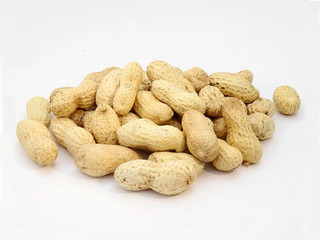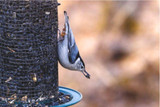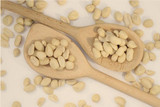Birds of Prey - Making a comeback!
Birds of Prey
Birds of prey. Public opinion has often been divided over Raptors, otherwise known as Birds of Prey. Over the centuries they’ve been the companions of Aristocracy and their presence encouraged to rid Medieval Streets of vermin. They’ve also been treated as vermin themselves with many species becoming endangered due to intensive farming practices, including the destruction of nesting sites and the use of pesticides which poison and kill their prey. Due to conservation efforts by among others, The Wildlife Trust, The RSPB and The Woodland Trust, Raptor numbers are increasing, and some species are once again becoming a common site in the British countryside. Four Birds of Prey that are making a comebackBuzzards
Buzzards have made a real comeback in recent years. In the early 1900’s there were fewer than 1000 breeding pairs in the UK. Thanks to conservation efforts there are now up to 68000 pairs.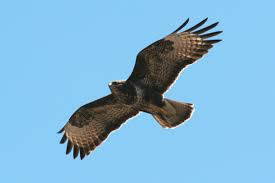
Breeding
During mating season males perform impressive aerial displays to catch the attention of females. This is an important ritual. Buzzards mate for life and will together raise between 2-4 nestlings per clutch. Buzzards normally build a large nest in a wooded area but will fly further a-field in search of prey.Spot a Buzzard
Being prevalent and large in size, Buzzards can be relatively easy to spot. You may even hear one before you see it. Listen out for a high-pitched ‘kee-yaaa' call.Quick Fact
As predators of smaller birds Buzzards are commonly ‘mobbed’ by crows, magpies and other corvids which will harass them from their territories and nesting sites.Red Kite
In 1980s the Red Kite was one of only three globally threatened species in the UK. Now there are approximately 1,800 breeding pairs in Britain which makes up around 7 % of the global population.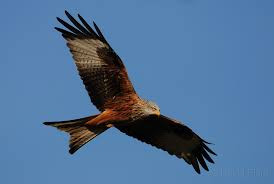
Breeding
Red Kites have large nesting territories and will build many nests while only choosing one to lay in. Nests will be built up to 20 metres above ground and are mainly constructed of twigs and old branches, interwoven with leaf litter and other “treasure” such as crisp packets, carrier bags and even clothes blown off a line. The nest will then be carefully lined with grass and sheep’s wool. If successful, the nest will be used again the following year with new material often being added to the old.Spot a Red Kite
The Common Buzzard is often mistaken for a Red Kite as both are large and quite prevalent. Flight is one way to distinguish between the two. Red Kites tend to glide quite gracefully whereas Buzzards flap their wings more frequently. Another prominent difference it tail shape. Red Kites have a forked tail whereas Buzzards have a fanned tail.Quick Fact
Red Kites can live between 8-12 years. The oldest known wild kite made it to the grand old age of 26 years.Sparrow Hawk
Once endangered, there are now an estimated 35,000 pairs currently breeding in Britain. Opinion has been divided about whether the increase in Sparrowhawks has contributed to a decline in songbirds (one of their prey) Scientific studies indicate that this isn’t the case however. Indeed, Sparrowhawks may simply cull a naturally occurring surplus which actually helps maintain a natural balance. After all songbirds and Sparrowhawks have successfully coexisted in the same habitats for centuries.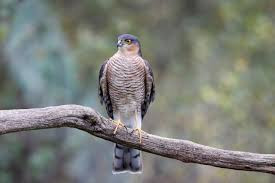
Breeding
Sparrowhawks tend to nest in woodland areas. Their breeding season lasts from spring to early summer. The male sparrowhawk will hunt while the female takes care of nestlings. Once their young become juveniles both parents will work to feed them right up to a month or so after they fledge.Spot a Sparrowhawk
Sparrowhawks are best spotted hovering intently over fields in search of prey. They quite small and golden brown in colour. Once they set their sights on their target they will make a sudden dive to the ground to catch it. A scattering of pigeon feathers in your garden is often a sign that a Sparrowhawk has visited.Quick Fact
Sparrowhawks frequently fall prey themselves to goshawks, who will not tolerate the smaller birds in their territory. Read more about the SparrowhawkBarn Owl
There are approximately 9,000 pairs of Barn Owls in Britain. Barn Owls live all over the world and are one of the most loved and well recognised of all birds. Sadly, numbers are in decline even though many Barn Owl deaths are preventable. 91 % of barn owls that underwent a post-mortem were found to contain rat poison, while in a typical year, around a third of all juvenile barn owls are killed on Britain’s roads.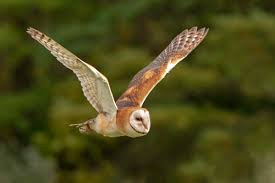
Breeding
Barn Owls tend to nest near, unimproved grasslands where they can find plenty of small rodents, their favourite prey. Barn Owls usually lay between 4 and 6 eggs in a clutch and their nesting season lasts from early spring to late summer. Barn Owls often make their nests from old owl pellets and traditional nest sites are often used for many generations.Spot a Barn Owl
Spotting a Barn Owl can be a truly magical experience. Though they make almost no noise when in flight due their haunting screech is distinct and easy to identify. Barn Owls are best spotted in wild, grassy areas at dusk, their favourite time to hunt.Quick Fact
Barn Owls eat approximately 4 small mammals every night, which makes a whopping 1,460 per year! Read more about the Barn Owl here ( link to the new barn owl guide)Explore Popular Articles
-
How Sunflower Seeds Can Improve Your Bird's Health
14th Jun 2024Birds are quite attracted towards sunflower seeds, but have you ever wondered about sunflower seeds'
-
The Ultimate Guide to Feeding Peanuts to Birds: Benefits and Considerations
16th May 2024Feeding Peanuts to birds is a common practice due to their high nutritious value. Being an excellent
-
Signs of Overfeeding Fish: How to Spot and Prevent it
7th May 2024Do you know that fish are more likely to die from overfeeding than starvation? One of the most pre









